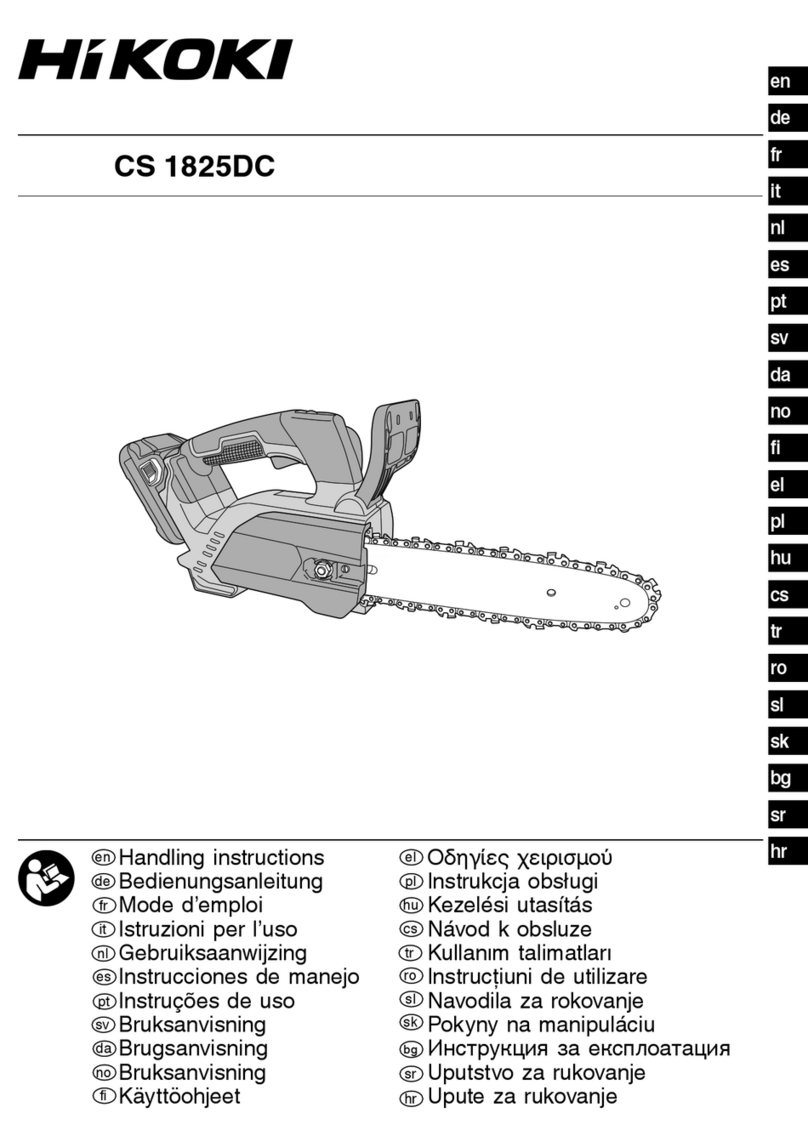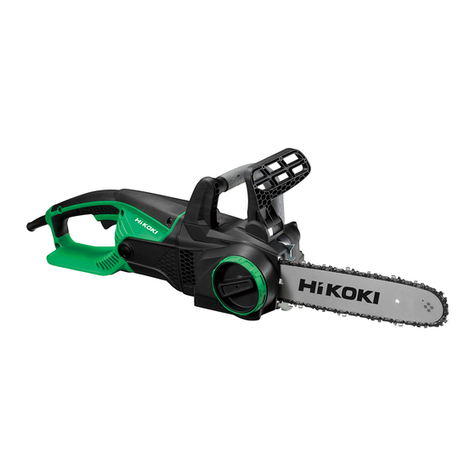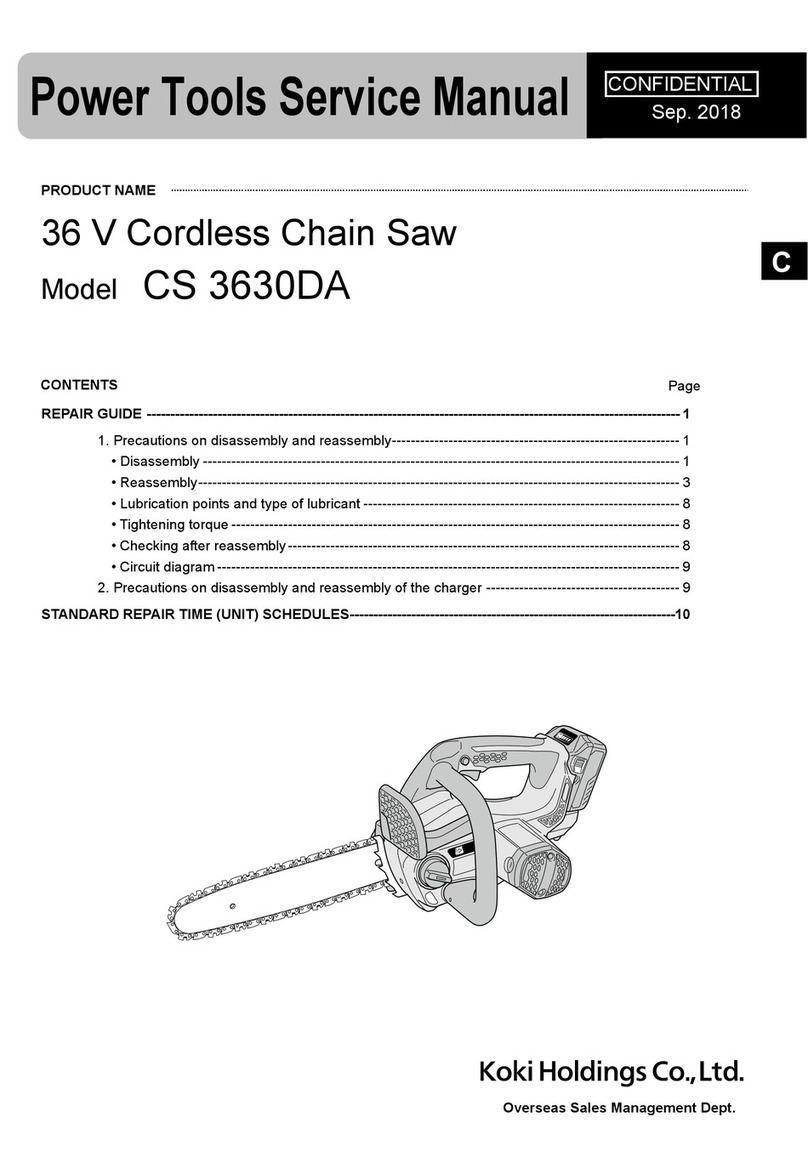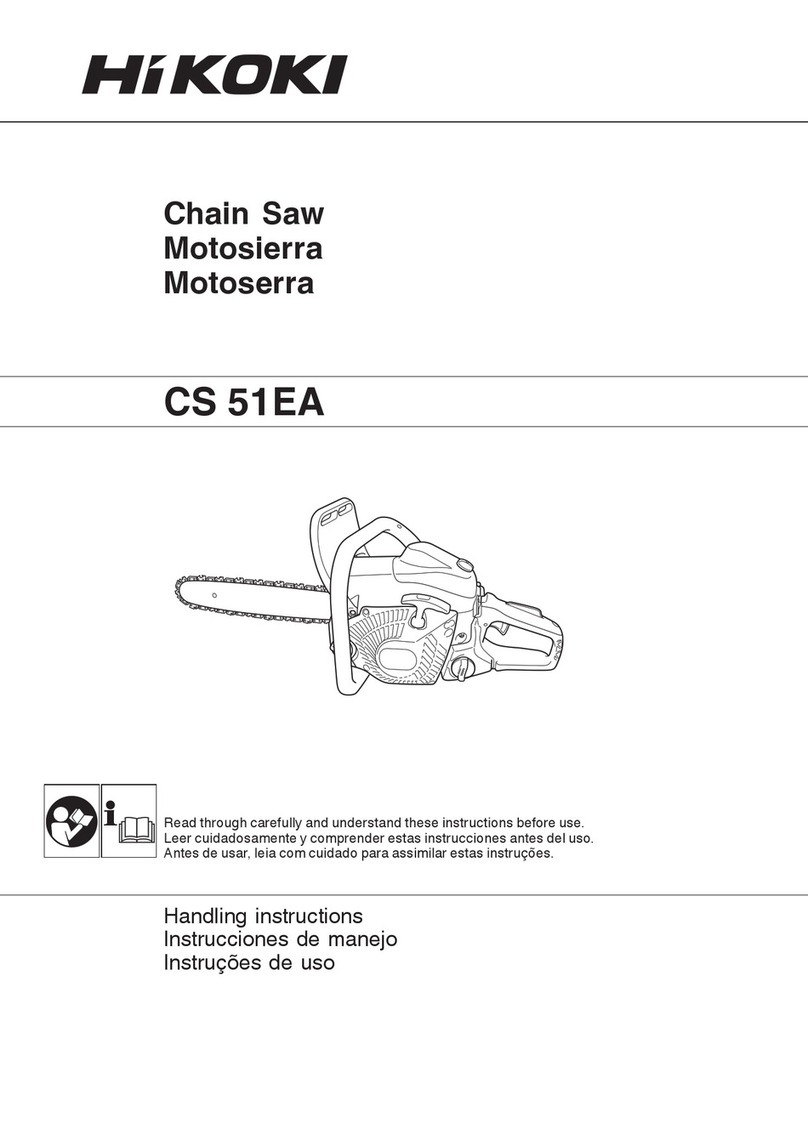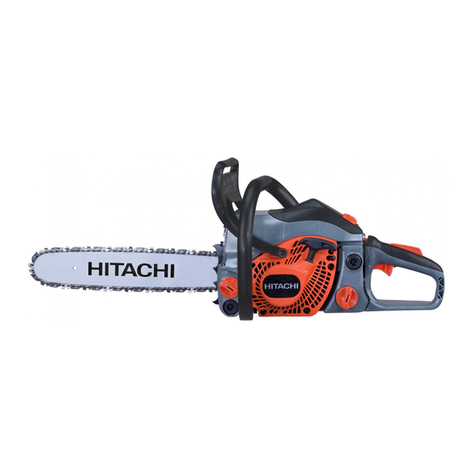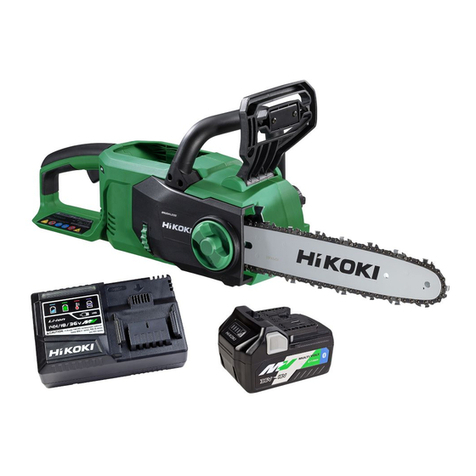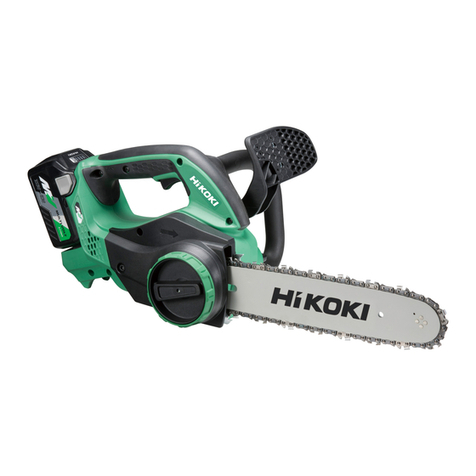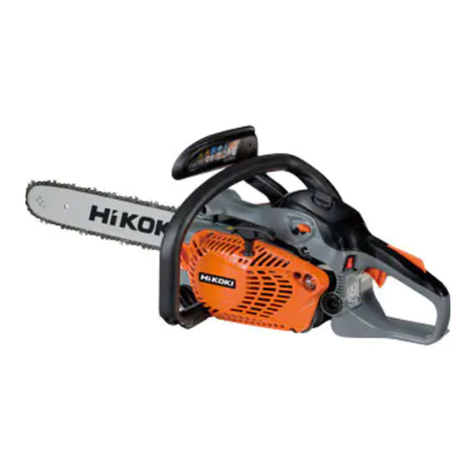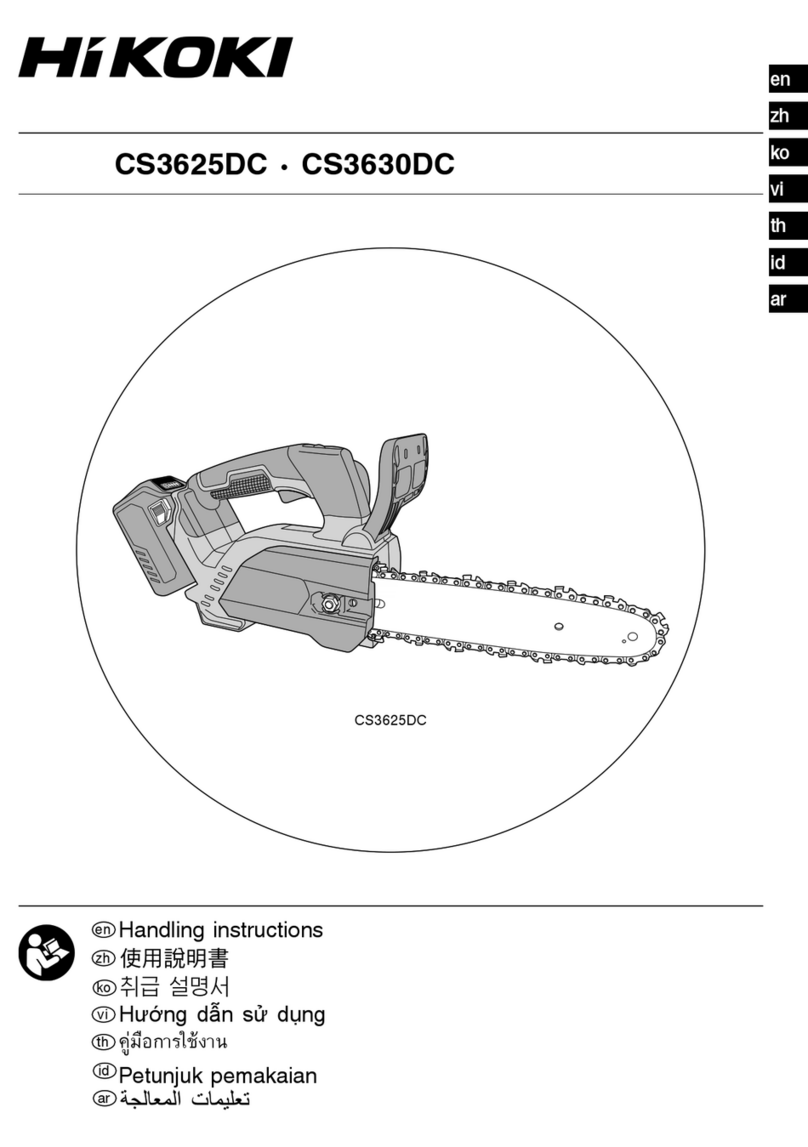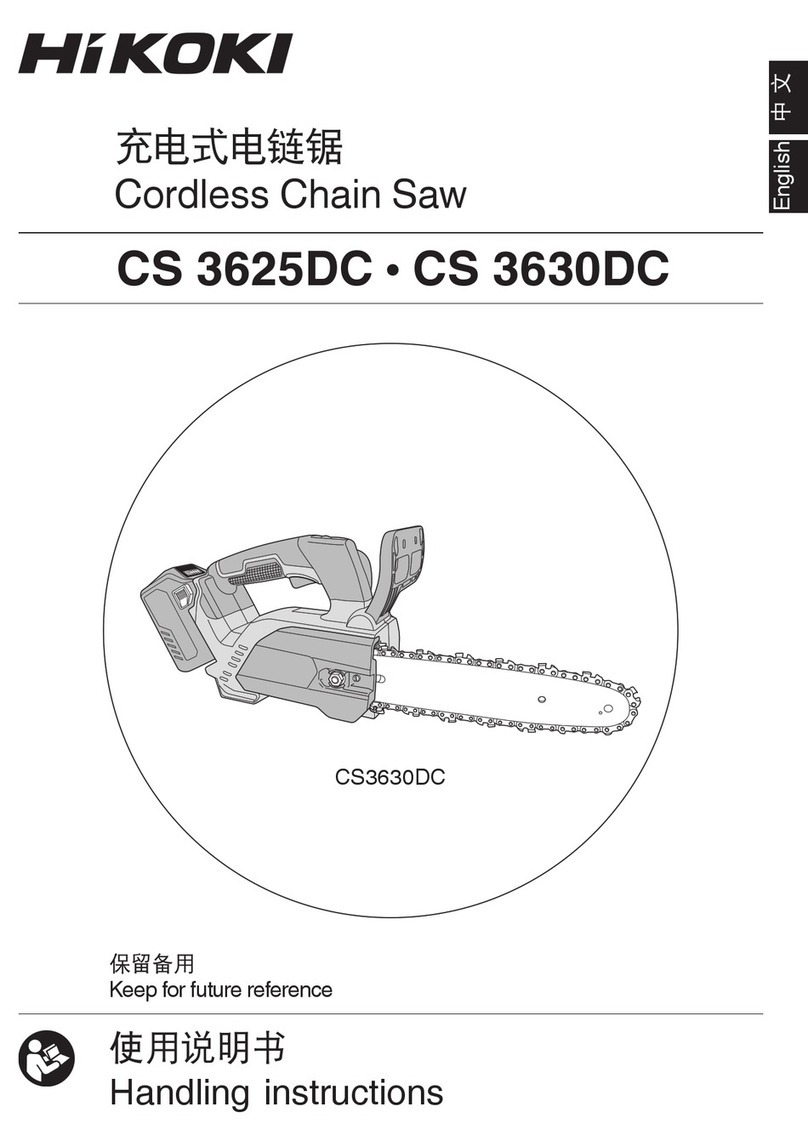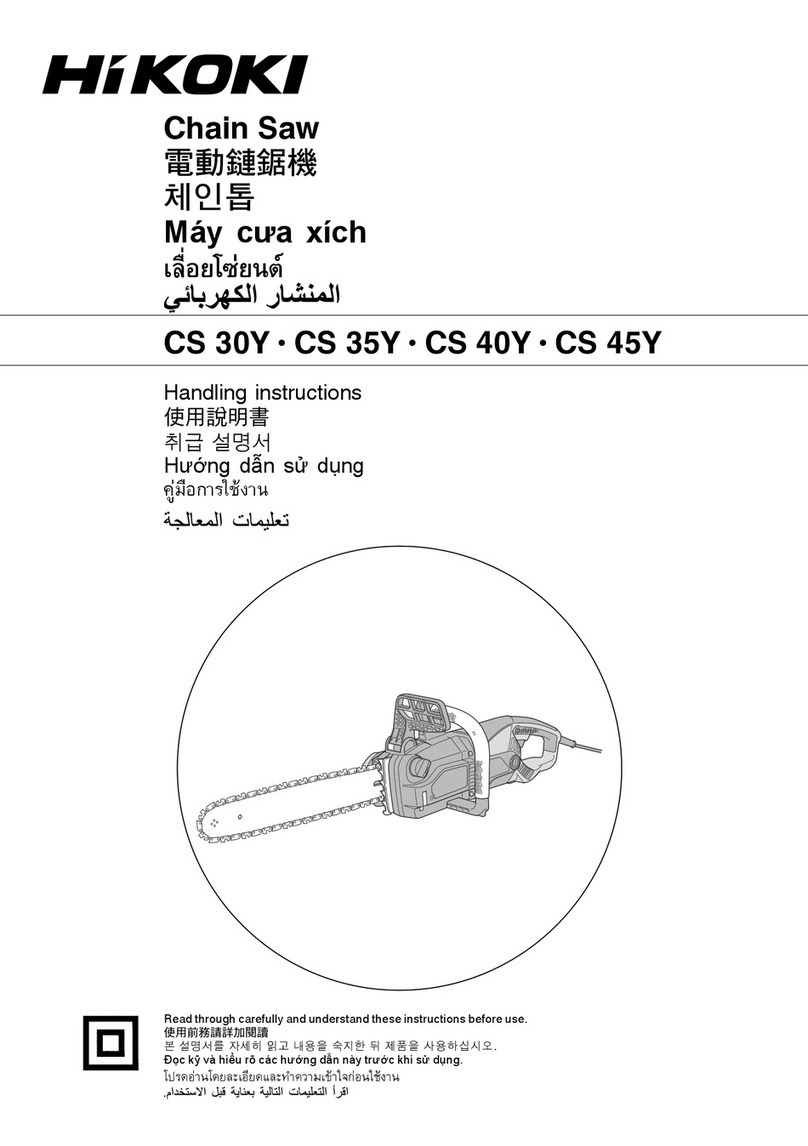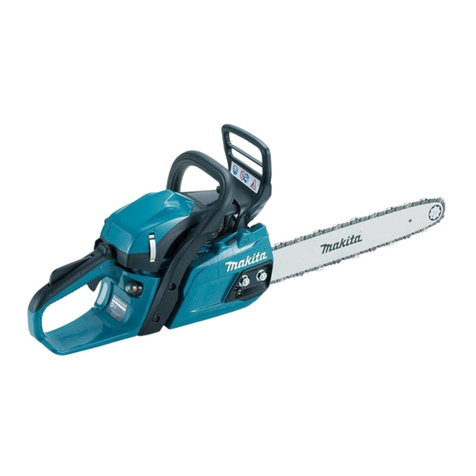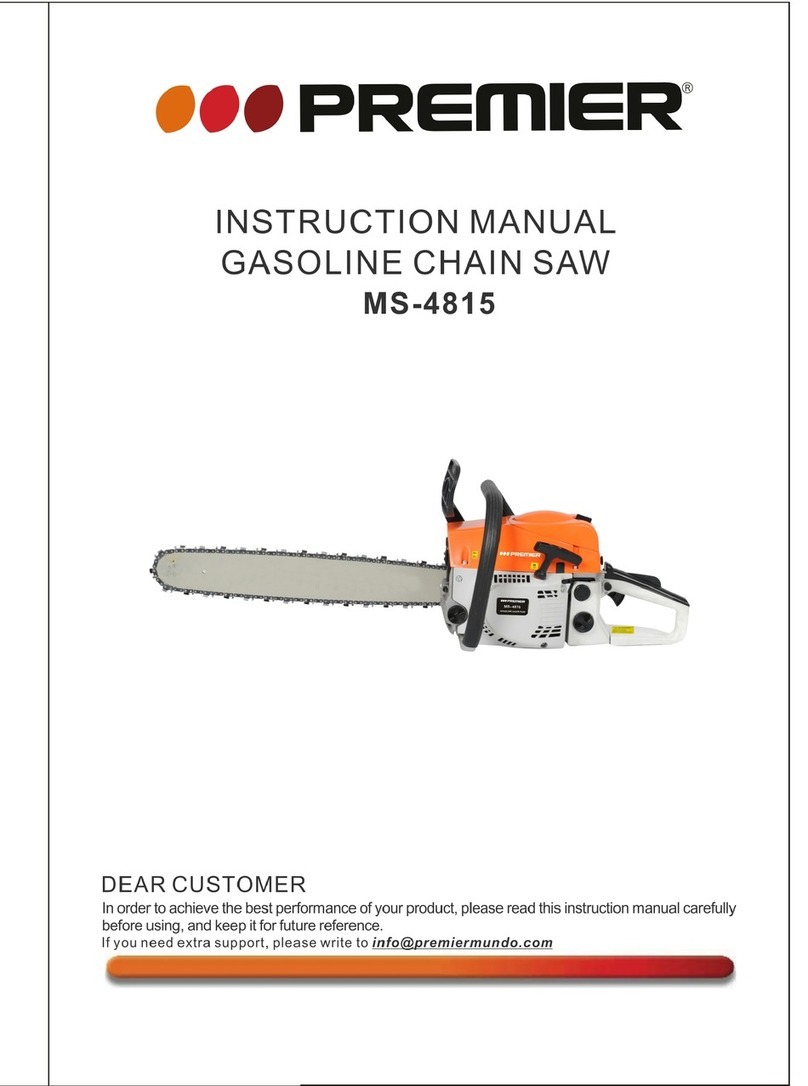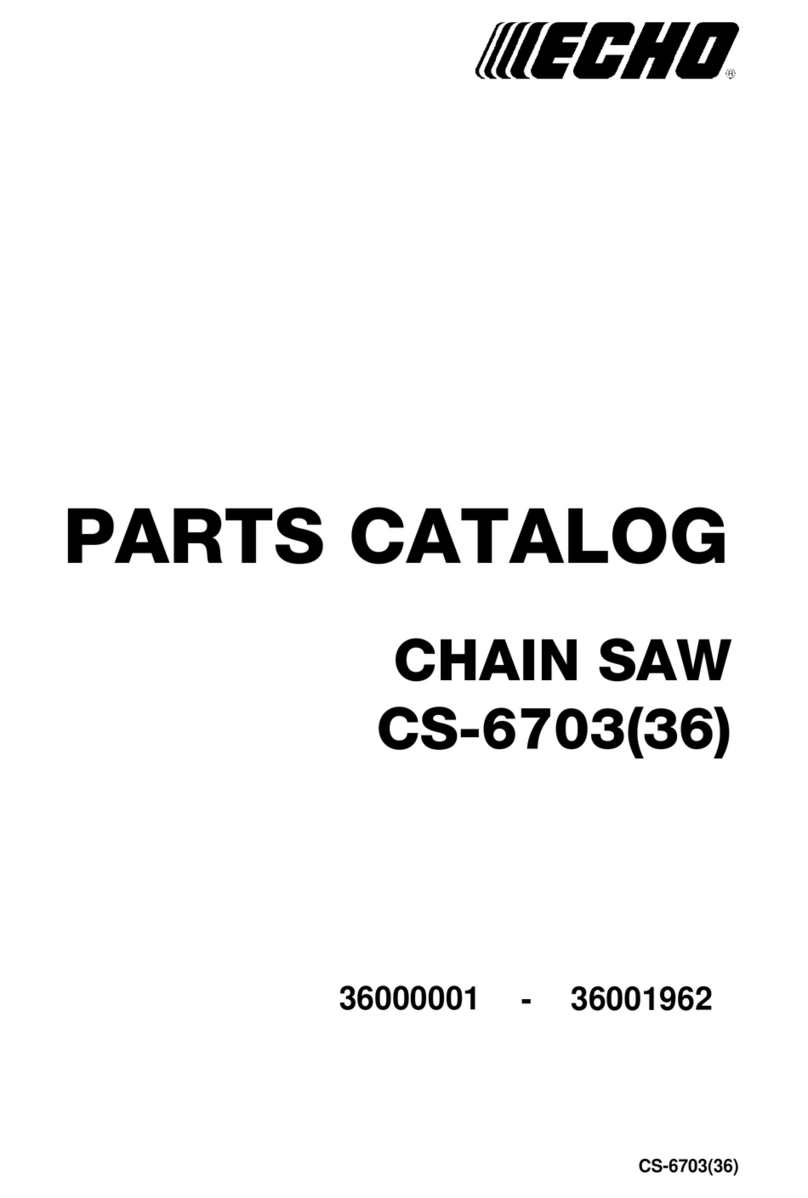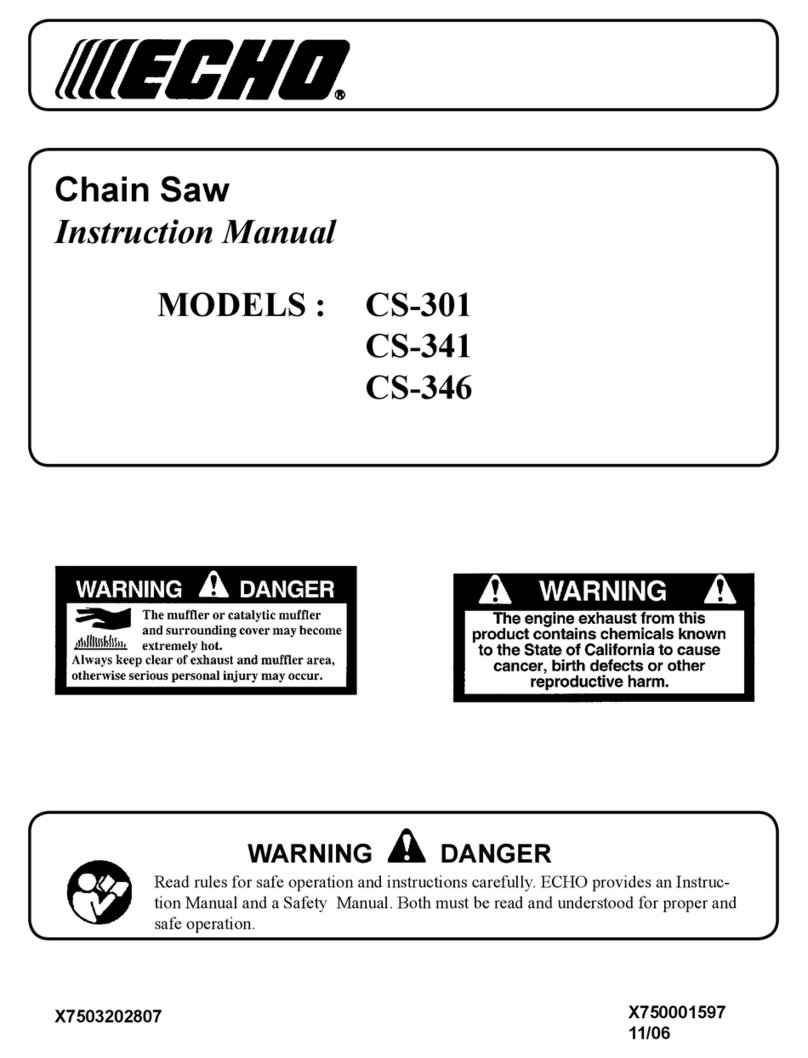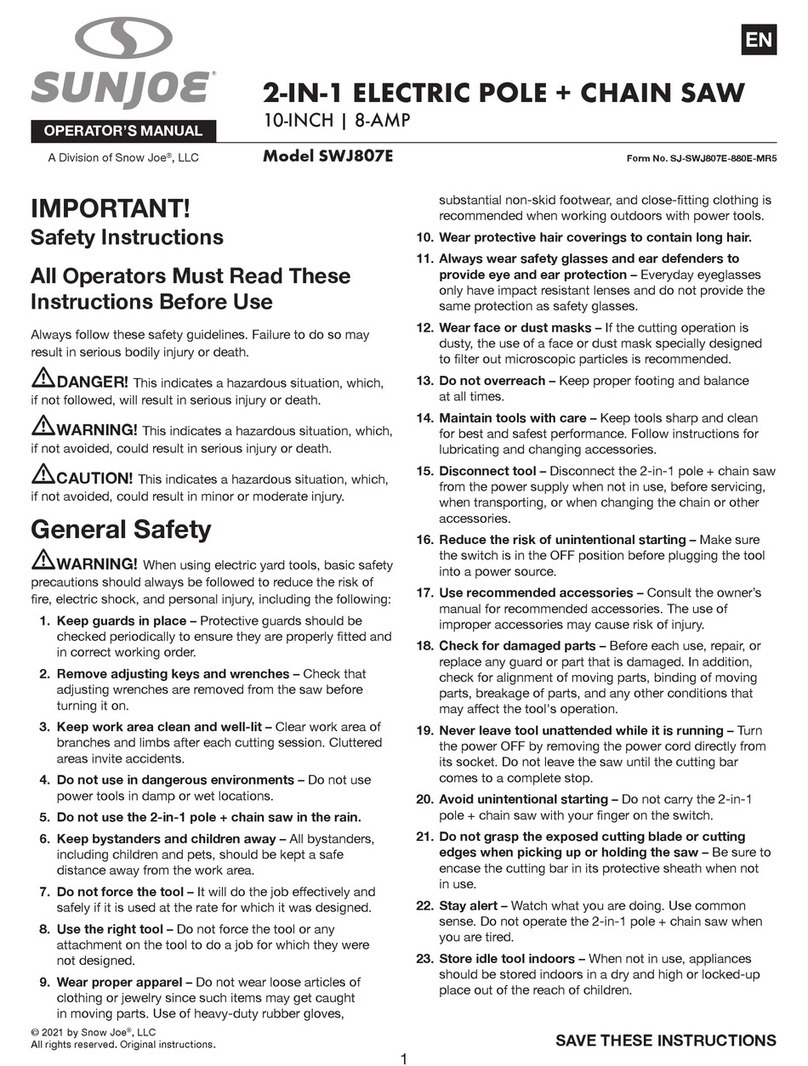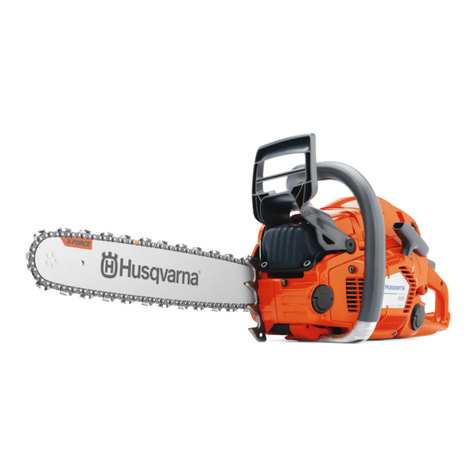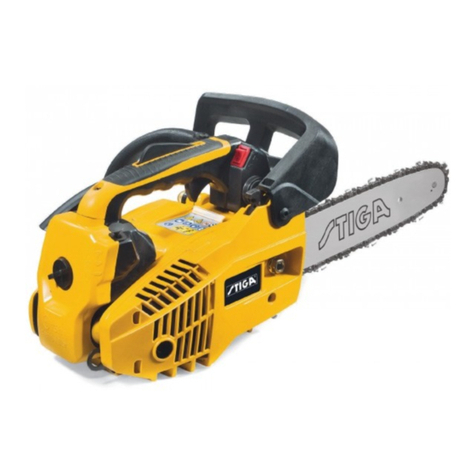
10
English
7. Install the saw chain properly, in accordance with the
instruction manual.
If installed incorrectly, the saw chain will come offthe
guide bar and injury may occur.
8. Never remove any of the safety devices equipped
on the chain saw (chain brake, lock-offbutton, chain
catcher etc.).
In addition, do not alter or immobilize them.
Injury may occur.
9. In the following cases, switch the unit offand ensure
the saw chain is no longer moving:
○When not in use or being repaired.
○When shifting to a new work location.
○When inspecting, adjusting or replacing the saw chain,
guide bar, chain case and any other part.
○When refilling the chain oil.
○When removing dust etc. from the body.
○When removing obstacles, trash or sawdust generated
from work from the work area.
○When you take offthe unit, or when you get away from
the unit.
○Otherwise, if you sense danger or anticipate risk.
If the saw chain is still moving, an accident may occur.
10. Work should generally be performed individually.
When multiple individuals are involved, ensure
sufficient spacing between them.
In particular, when felling standing trees or working on
a slope, if you anticipate trees falling, rolling or sliding,
ensure there is no danger to other workers.
11. Remain more than 15 m away from other people.
In addition, when working with multiple persons,
remain 15 m or more apart.
○There is a risk of impact with scatters and other
accidents.
○Prepare a whistle alert etc. and determine appropriate
contact method for other workers beforehand.
12. Before felling standing trees, ensure the following:
○Determine a safe evacuation location prior to felling.
○Remove obstacles (e.g., branches, shrubs) in advance.
○Based on a comprehensive evaluation of the state
of the tree to be felled (e.g., trunk bend, tension of
branches) and the surrounding situation (e.g., state of
adjacent trees, presence of obstacles, terrain, wind),
decide on the direction in which the standing tree will
fall and then plan the felling procedure.
Careless felling may result in injury.
13. When felling standing trees, ensure the following:
○During work, be very careful of the direction in which
trees fall.
○When working on a slope, ensuring the tree will not roll,
always work from the uphill side of the terrain.
○When the tree starts falling, switch the unit off, alert
the surroundings, and immediately retreat to a safe
location.
○During work, if the saw chain or guide bar become
entangled in the tree, switch offand use a wedge.
14. During use, if the unit performance deteriorates, or you
notice any abnormal sound or vibration, immediately
switch offand discontinue use, and return to your
HiKOKI Authorized Service Center for inspection or
repair.
If you continue using, injury may occur.
15. If the unit is accidentally dropped or exposed to impact,
inspect carefully for damage or cracks and ensure
there is no deformation.
If the unit is damaged, cracked or deformed, injury may
occur.
16. When transporting the unit by car, secure the unit to
prevent it moving.
There is a risk of accident.
17. Do not switch the unit on while the chain case is
attached.
Injury may occur.
18. Ensure there are no nails and other foreign objects in
the material.
If the saw chain impact on the nail etc., injury may
occur.
19. To avoid the guide bar becoming entangled with the
material when chopping on a verge or when subject to
the weight of material while cutting, install a supporting
platform close to the cutting position.
If the guide bar becomes entangled, injury may occur.
20. If the unit is to be transported or stored after use, either
remove the saw chain, or attach the chain case.
If the saw chain comes into contact with your body,
injury may occur.
21. Adequately care for the unit.
○To ensure work can be performed safely and efficiently,
care for the saw chain to ensure it provides optimal
cutting performance.
○When replacing the saw chain or guide bar, maintaining
the body, filling oil etc., follow the instruction manual.
22. Ask the shop to repair the unit.
○Do not modify this product, since it already complies
with the applicable safety standards.
○Always refer to your HiKOKI Authorized Service Center
for all repairs.
Attempting to repair the unit yourself may result in an
accident or injury.
23. When not using the unit, ensure it is properly stored.
Drain offthe chain oil, and keep in a dry place out of
reach of children or a locked location.
24. If the warning label is no longer visible, peels offor is
otherwise unclear, apply a new warning label.
For the warning label, refer to your HiKOKI Authorized
Service Center.
25. When working, if local rules or regulations apply,
comply with the same.
26. Do not use the product if the tool or the battery terminals
(battery mount) are deformed.
Installing the battery could cause a short circuit that
could result in smoke emission or ignition.
27. Keep the tool’s terminals (battery mount) free of swarf
and dust.
○Prior to use, make sure that swarf and dust have not
collected in the area of the terminals.
○During use, try to avoid swarf or dust on the tool from
falling on the battery.
○When suspending operation or after use, do not leave
the tool in an area where it may be exposed to falling
swarf or dust.
Doing so could cause a short circuit that could result in
smoke emission or ignition.
28. Always use the tool and battery at temperatures
between -5°C and 40°C.
PRECAUTIONS FOR BATTERY AND
CHARGER (sold separately)
1. Always charge the battery at a temperature of
0°C–40°C. A temperature of less than 0°C will result in
over charging which is dangerous. The battery cannot
be charged at a temperature higher than 40°C.
The most suitable temperature for charging is that of
20°C–25°C.
2. Do not use the charger continuously.
When one charging is completed, leave the charger for
about 15 minutes before the next charging of battery.
3. Do not allow foreign matter to enter the hole for
connecting the rechargeable battery.
000BookCS3630DB.indb10000BookCS3630DB.indb10 2021/01/1512:32:582021/01/1512:32:58

